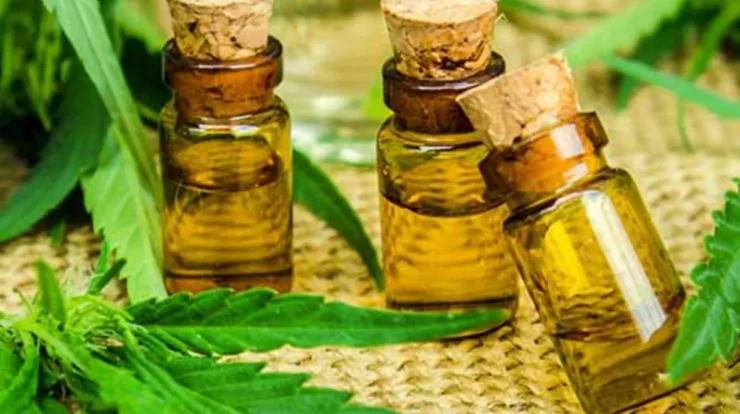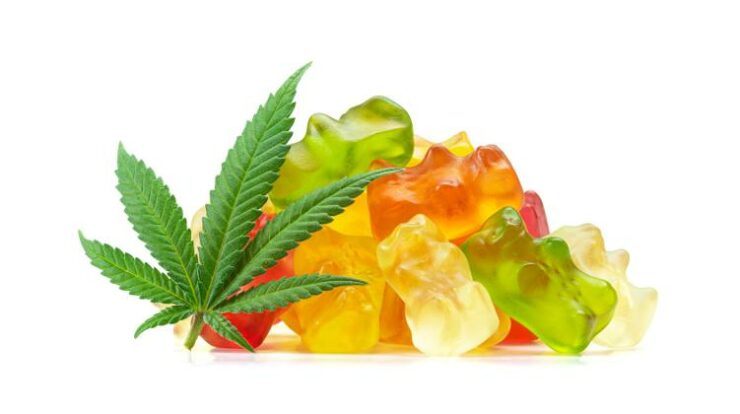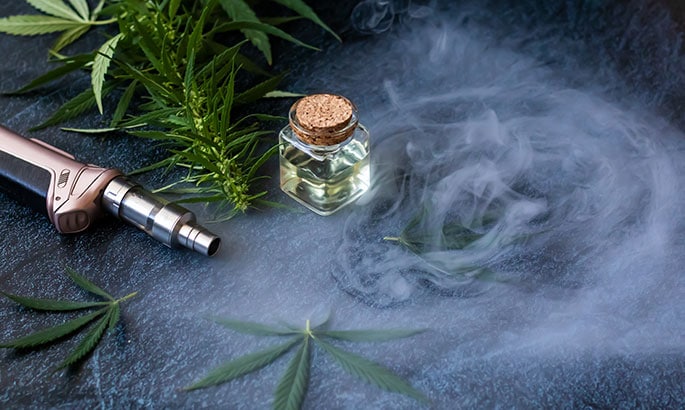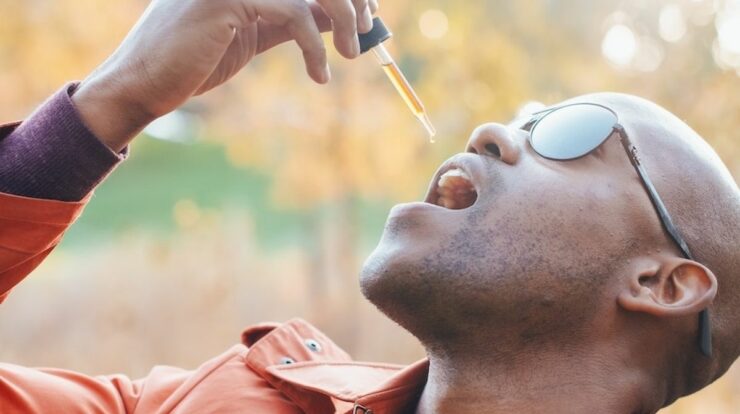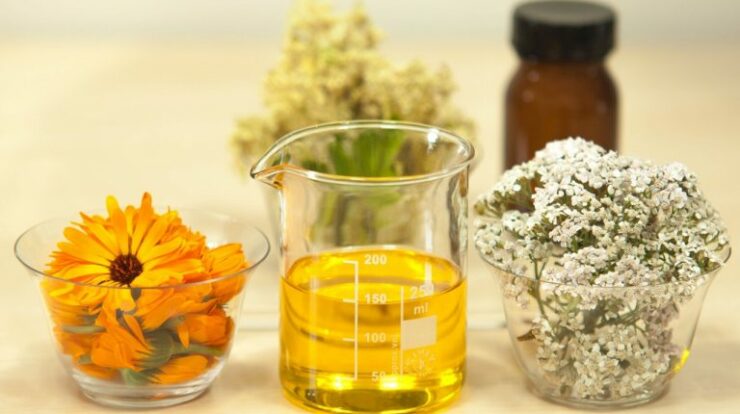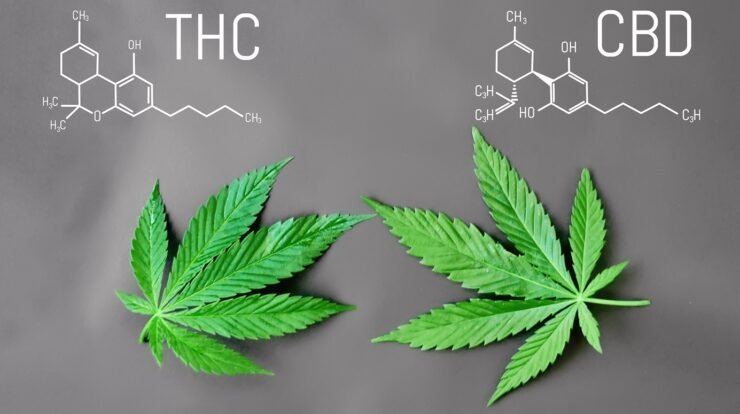
The plant Cannabis is a composite structure that is full of cannabinoids. Cannabis contains over a hundred of these chemicals. The most known cannabinoids derived from cannabis products are CBD (cannabidiol) and THC (tetrahydrocannabinol). Both marijuana and hemp are used for THC and CBD. Marijuana is much more THC than cannabis, although there is much CBD in hemp. CBD is a normal and non-controlled drug, which means that you do not feel intoxicated, is 100 percent non-psychoactive. In comparison, THC is the compound that produces a high present in marijuana. It is also called illegal because it is considered a controlled drug. If we compare both that is CBD VS THC, we will find a broad range of differences between them due to their differences, their uses, side effects, and scopes are different from each other. Here we are going to list some differences between CBD and THC but before that one should know about CBD and THC.
CBD:
Cannabidiol is one of the most essential, cannabinoids in the plant. CBD is used for both hemp and medicinal purposes. Although some plants contain cannabinoids, the only plant that produces CBD is cannabis. With the atoms in a different configuration, the CBD has the same chemical composition as THC. The small variation contributes to a psychoactive effect of THC, but not CBD. This makes it easier for you to alleviate your unnecessary pain while you are ingesting CBD for medicinal purposes, with little to no noticeable effect on your cognitive ability. Besides relieving pain, it has many benefits particularly in medical fields, and in most emerging drugs nowadays.
THC:
THC is the ecstatic, pain reliever, and the relaxing agent responsible for the effects of cannabis use, often referred to as high marijuana. It is the only cannabinoid with concentrations large enough to make the consumer more involved. THC is therefore associated with recreation for a long time. Nonetheless, the benefits of THC are numerous and recorded. Its change in perception and mood changing characteristics can potentially be used across a variety of physical and mental conditions.
Differences between CBD and THC
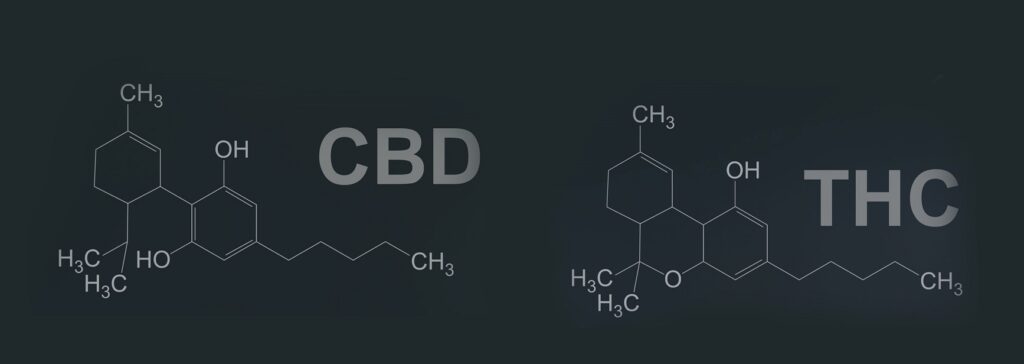
There are many differences between CBD and THC related to their uses, benefits, legality, composition, and side effects. Here we are going to list CBD VS THC differences:
1. Chemical composition
The same molecular composition occurs in both CBD and THC, that is, the same carbon atoms, hydrogen atoms, and oxygen atoms. The various effects on your body are responsible for a small variation in how atoms are organized. This gives different chemical properties to CBD and THC, and it has a different effect on your body. CBD and THC are also chemically related to the endocannabinoids in your body. This can then bind to receptors present in the body. THC is considered as a protagonist that gives the cannabinoid receptors a “drugged up” feeling. CBD acts as a receptor, the same indirect blocker. CBD is believed to intervene in binding THC, which explains when used in combination with the psychoactive damping effects. The interaction affects neurotransmitter release in the brain. Neurotransmitters are chemicals that relay messages between cells and have roles for pain, immunity, depression, and insomnia.
2. Legality:
The latest legislation excluded cannabis from the list of controlled substances, where it has historically been listed as heroin or LSD narcotics. Hemp is now legal for the production and processing of paper, clothing, pieces of equipment, food, and supplementary health products such as CBD oil, for commercial purposes. As long as you have less than 0,3 percent THC in your CBD product, you should have no legal problem. In most countries around the world, the laws on THC and marijuana are tough. The recreational use of the plants has only, been fully limited by Canada and Uruguay. The U.S. has a bumpy marijuana background. The federal statute, however, still treats marijuana as a drug in Schedule I. Marijuana is not used as medicine and is extremely likely to be abused, according to the government. This conflicts significantly with recent studies. Make sure it is from hemp when you are buying CBD online.
3. Uses or Benefits:
CBD also helps to extend the list of conditions. Further study is required for a deeper understanding of the effectiveness and range of CBD benefits, but the following symptoms and conditions are widely used for managing:
- Seizure disorders and epilepsy
- Pain reliever and swelling
- PTSD and fear
- Disease of Crohn
- Multiple Sclerosis
- Removal of opioid
CBD is known for treating a rare and weakening type of pediatric epilepsy, although clinical and anecdotal evidence indicates the CBD can help manage a variety of conditions as the syndrome of Dravet is extremely resilient to current methods of treatment. Convulsions in people with the condition appear to escalate at an age and may endanger their lives.
Though THC is best known for its changing euphoria, it also has major medical advantages. CBD and THC may be overlapped, but THC is particularly effective in alleviating nausea, weight loss, and insomnia among, other symptoms. There are many overlaps. Many patients see CBD and THC balance as offering the best relief in the synergy between the two.
4. Side effects
Few side effects are known because of studies done on THC and CBD. But CBD is known for lesser side effects. Any temporary side effects may occur to anyone who consumes THC. These can contain:
- Mouth drying
- Redness of eyes
- Respond times are less than average
- a general perception that you are high
- Loss of memory
- Coordination difficulties
- Heart rate improved
In particular, young people can have adverse psychiatric effects when they arise. This may be due to the growth of the brain of a teenager. People with THC often tend to be unlikely to develop an addiction to them in a recreational way.
5. Effect of Entourage
While a compound alone can produce many positive effects, research has shown to improve overall efficacy by using a wide variety of cannabis compounds. The ‘entourage effect’ is called this cooperative partnership between cannabinoids. The use of cannabis products, which contain a large range of plant components instead of a single molecule, can be promoted. The use of cannabis products today revolves around the psychoactive properties of THC, with two distinct approaches:
- Cannabis consumers are searching for the highest possible amount or consistency of THC-rich weed.
- Medicine patients also do not want a high amount of cannabis. Rather, they also pursue optimum therapeutic properties with limited psychoactive effects.
Hemp-derived CBD oils are mostly just the right product for medical consumers. Such items allow patients without a high level of marijuana usage to enjoy the medicinal benefits of cannabis. Hemp sourced goods contain THC trace amounts due to regulatory limits on hemp processing THC material. Users that use whole plant products will benefit from a wide variety of therapeutic advantages and have no psychosis.
6. Drug Testing
Body fat stores cannabinoids such as THC and CBD. For several days or weeks after your use, you will demonstrate yourself in medicinal tests. Not all drug testing can detect CBD, although there is available CBD-sensitive testing. Many standard drug tests seek THC related chemicals, so THC or marijuana use can appear in a screening procedure. Often, in addition to CBD, hemp can contain some THC, so even though you have not used it, a test can be positive for THC. Therefore, if you are tested for the medication, you should not use any CBD or THC products.

